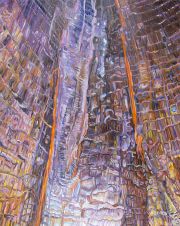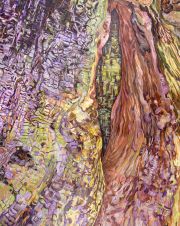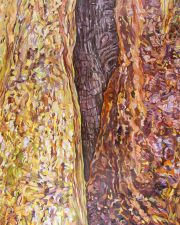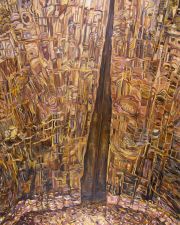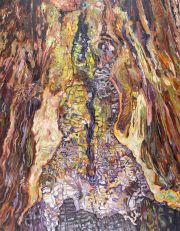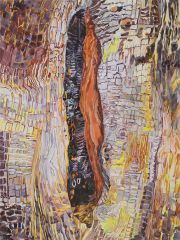Linda MacDonald
Artist Statement / Bio
Ideas and Issues
Current Work
California is filled with hot environmental issues: logging, endangered species, control of water, oil pumping, freeways, encroaching vineyards, nature, etc. These same issues affect the rest of the world. I am interested in all of these topics as sources for my artwork.
What is Happening to the Trees?
I have particularly focussed on logging and grouped much of my work of the 1990's and early 2000's under this title. The trees in the northwest are declining because of logging, overcutting, fires, and encroaching development. I look at this decline and like to use images to portray these changes in a very graphic style. I also use humor -- making it a bit easier to confront these negative realities.
The historical background of logging in short is: old growth trees were first cut in the 19th and early 20th centuries; since the 1950s, second growth trees have been cut. The chain saw was developed and put into use in the 1950's; production output was greatly increased. Today any old growth left is either in private preserves usually owned by logging companies, or in groves in National Forests. The 1980's was a boom time as helicopter logging, feller-bunchers and large companies took over. The 1990's Endangered Species Act led to the use of the spotted owl as a scapegoat and as a political tool to fight irresponsible logging. Old growth groves on private land were protected at the expense of other tracts of timber. Small mills were forced out of business as the timber supply dwindled. Large companies either moved back to the southern part of the U.S., or controlled the market through over-cutting and using smaller diameter trees, called 'pecker poles' by loggers. Large companies also relied on independent loggers (gyppos) instead of keeping their own men employed with good benefits and job security.
I have watched the depletion of the forests in Mendocino County and in other northwest areas over the past 30 years. In spite of all the devastation, I do see some hope: government and environmental agencies are working towards a sustainable forest, one that can produce income, recreation, and be a sanctuary for wildlife. However, much permanent destruction has been done. I encourage people to take an active interest in their own watershed forests and to communicate with their elected officials about the future of these precious resources.
Artist Essentials
- Contact Artist
- Artist Website
- Phone: 7073545684
Willits, California
United States
Northern America
Artist Social
- Facebook: Linda MacDonald
- Instagram: https://www.instagram.com/lindamacdonaldpainter/

